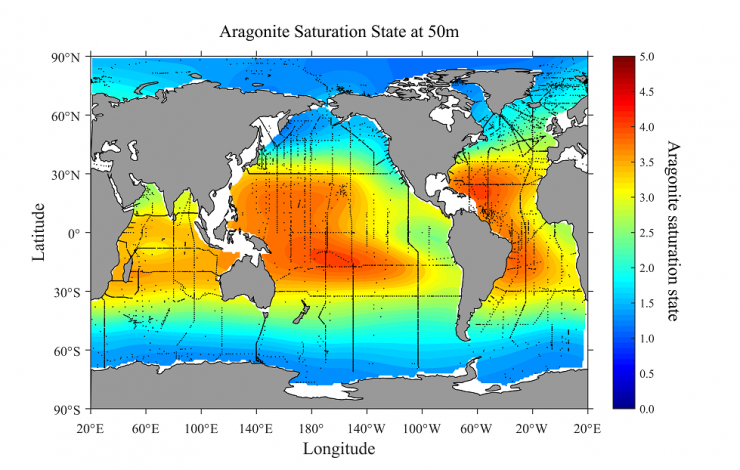New NOAA research in Global Biogeochemical Cycles maps the distribution of aragonite saturation state in both surface and subsurface waters of the global ocean and provides further evidence that ocean acidification is happening on a global scale. The study identifies the Arctic and Antarctic oceans, and the upwelling ocean waters off the west coasts of North America, South America and Africa as regions that are especially vulnerable to ocean acidification. The most vulnerable areas of the global ocean are being hit with a double whammy of sorts. In these areas, deep ocean waters that are naturally rich in carbon dioxide are upwelling and mixing with surface waters that are absorbing carbon dioxide from the atmosphere, which comes primarily from human-caused fossil fuel emissions.
Read the NOAA press release, the article in Global Biogeochemical Cycles, and visit the NOAA PMEL Carbon Program and the NOAA National Centers for Environmental Information webpages.



